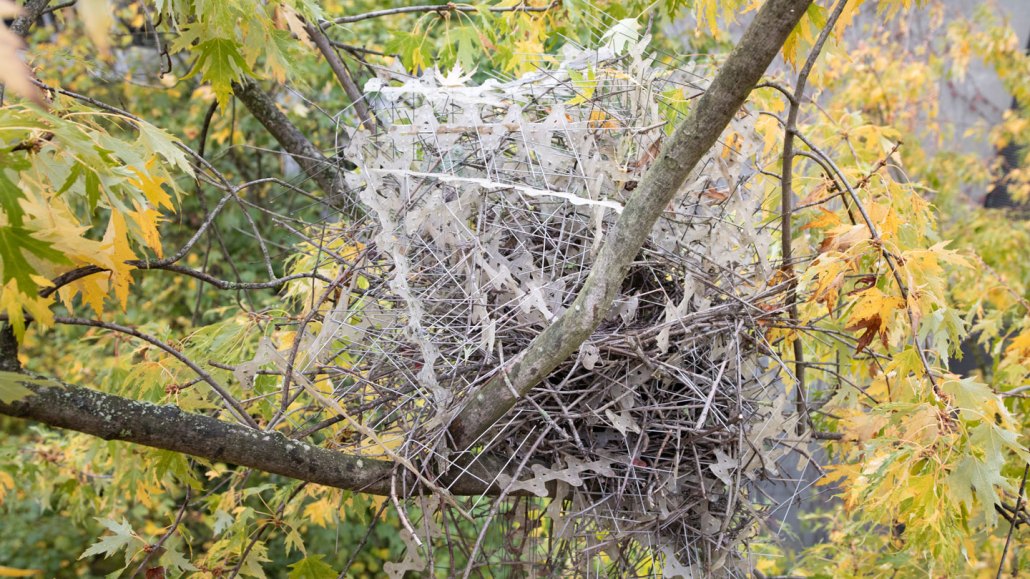In a ‘perfect comeback,’ some birds use antibird spikes to build their nests
Some Eurasian magpies may use the spikes as they were originally intended — to ward off other birds

A Eurasian magpie nest made partly out of more than 1,500 antibird spikes sits in a sugar maple tree in Antwerp, Belgium.
Auke-Florian Hiemstra